4K 144Hz is the new high-end standard for gaming but monitors that can perform at this level remains at a premium for most enthusiasts. The ASUS TUF Gaming VG28UQL1A aims to change that by offering 4K 144Hz gaming at a lower price compared to more deluxe alternatives.
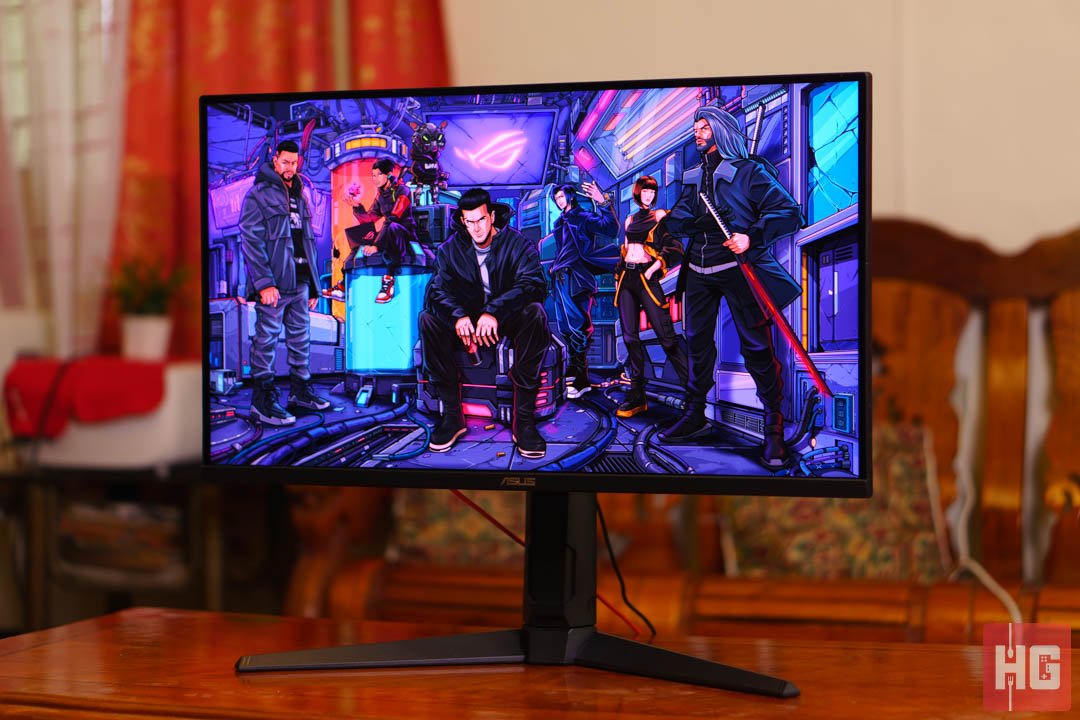
| Panel Size (Diagonal) | 28-inch, 16:9 |
| Panel Type | IPS, Anti-Glare Coating |
| True Resolution/Refresh Rate | 3840 x 2160, 144Hz |
| Response Time | 1ms (GTG) |
| Color Gamut/Brightness | 90% DCI-P3, 450cd/m2 (HDR, Peak), 300cd/m2 (Typical) |
| Color Depth | 10-bit |
| Contrast Ratio | 1,000,000:1 (HDR,Max), 1,000:1 (Typical) |
| Viewing Angles | 178°(H) / 178°(V) |
| HDR | HDR10 |
| I/O Ports | 1x DisplayPort 1.4, 2x HDMI 2.1, 2x HDMI 2.0, 2x USB 3.1, 3.5mm Audio Jack, USB 3.0 |
| VESA | 100 x 100 |
| Adjustment | Tilt -5° – +20°, Swivel -15° – +30°, Pivot -90° – +90°, Height 0 – 120mm |
| Audio | 2x 2W Speakers |
| Dimensions | 639.5 x 539.8 x 213.8mm (with stand), 639.5 x 369.35 x 65.65mm (without stand) |
| Weight | 6.89kg (with stand), 4.67kg (without stand) |
| Video Features | GameVisual, PIP/PBP, HDCP 2.2, ELMB, ELMB Sync, FreeSync, G-SYNC, Shadow Boost, DisplayWidget, Low Blue Light, HDR, DisplayHDR 400 |
| Others | Kensington Lock |

The ASUS TUF Gaming VG28UQL1A comes with the bare essentials when it comes to accessories. It ships with a single HDMI cable, one DisplayPort cable, a USB Type-B to Type-A cable for upstream connection for its USB hub, a power adapter, a power cable, and documentation.
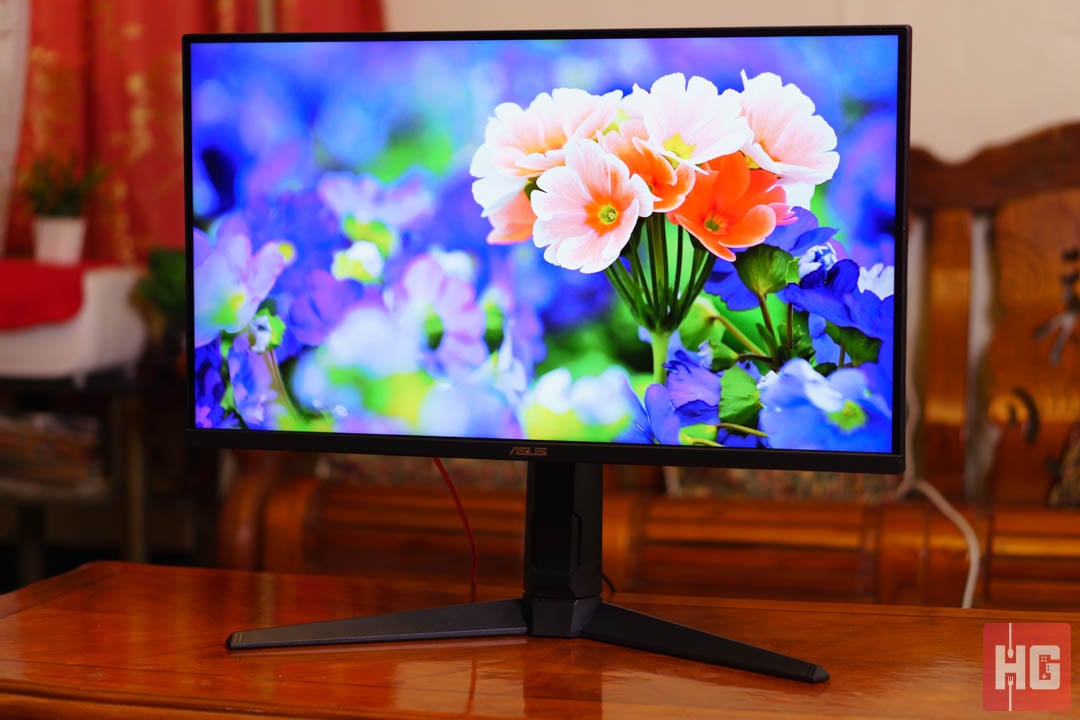
The ASUS TUF Gaming VG28UQL1A has the same design trappings as other TUF components and peripherals – angular edges and matte black paintjob – as expected from the tier. At the front is a 28-inch 16:9 IPS display with anti-glare coating and minimal bezels that supports 3840 x 2160 at 144Hz.
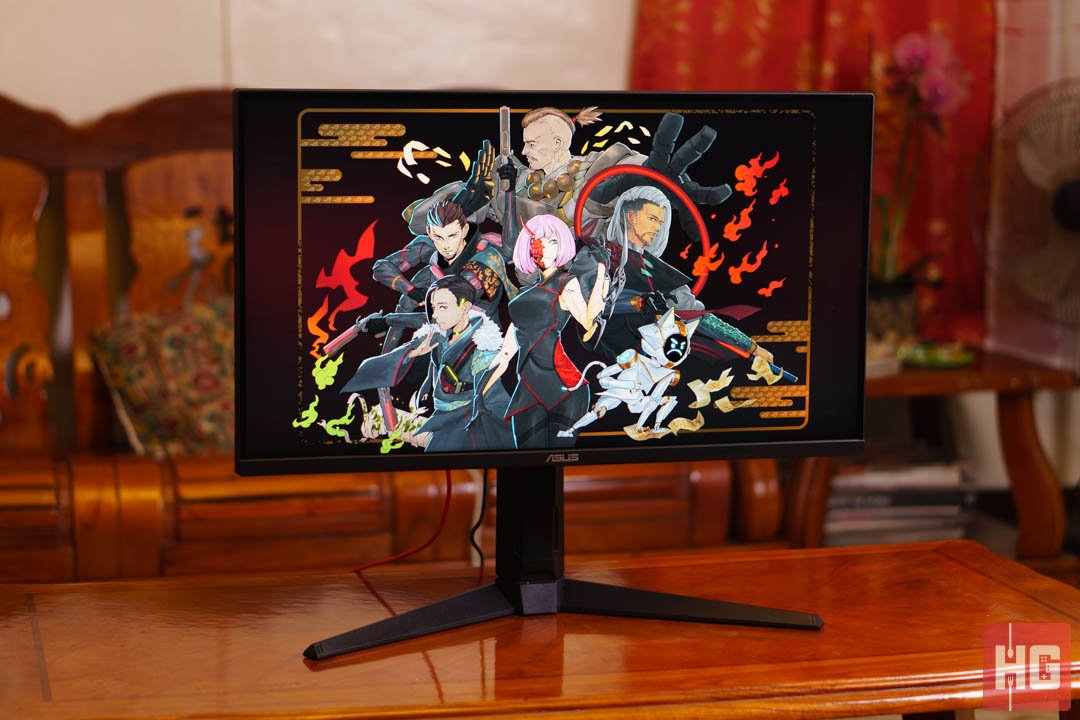
The display has various gamer-focused features as well such as FreeSync Premium, G-SYNC, Shadow Boost, ELMB, and ELMB Sync. Productivity options are also present like Picture-in-Picture and Picture-by-Picture.

The display itself weighs in at around 4.67kg, which should be light enough for most mounts that support 100 x 100 VESA. The stand adds about 2kg when the display is fully assembled. The stand itself gives the monitor a lot of adjustment options including tilt, pivot, and height. You can even use the display vertically if you wanted. The only thing missing in the stand is a tactile notch to let you know that they have set its adjustments to the middle.
The VG28UQL1A does come with two 2W speakers but we expect that most gamers and enthusiasts at this price range will have their own audio devices. Its controls are located at the back and has the traditional 4-way joystick along with several buttons to control the display.
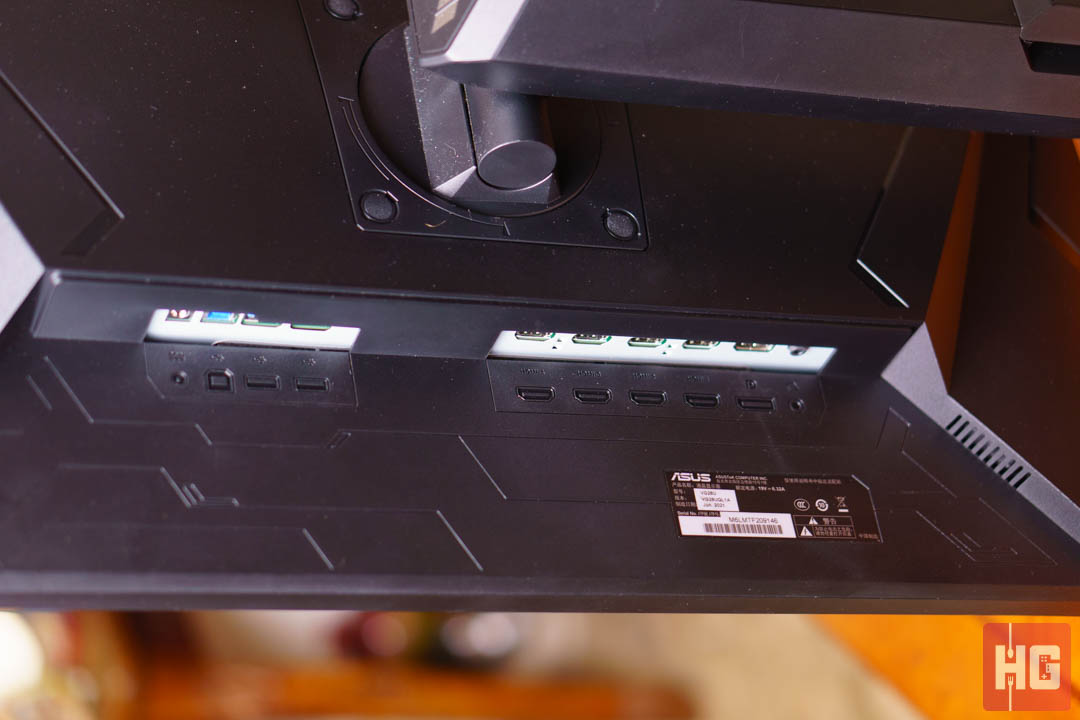
The ASUS TUF Gaming VG28UQL1A has a plethora of display and USB connections at the back. At the left are power, USB Type-B (upstream), and two USB 3.1 Gen1 ports for peripherals and even storage.
Clustered at the right-hand side are all its display connections. The monitor has a total of two HDMI 2.1 ports, two HDMI 2.0 ports, and a single DisplayPort 1.4. At the edge is a single 3.5mm audio jack as audio passthrough for headphones or other audio devices.

The display can be controlled through a 4-way joystick at the back accompanied by several buttons for power and preset shortcuts though the latter can be programmed through the OSD.
The VG28UQL1A’s OSD has a ton of customization options to tailor-fit your gaming experience. You can access six levels overdrive, toggles for adaptive sync, GSYNC, ELMB, ELMB Sync, ASCR, Dynamic Dimming, Blue Light Filters, and differing levels of Shadow Boost. Long-standing ASUS gaming monitor OSD features like built-in crosshair, FPS counter, timer, among many others are also available.
Gamma and Skin Tone can even be adjusted on the OSD. Color Temperature has three included presets but user mode is present for minute adjustments for color accuracy. The monitor has a 7 color presets depending on your preference. These include:
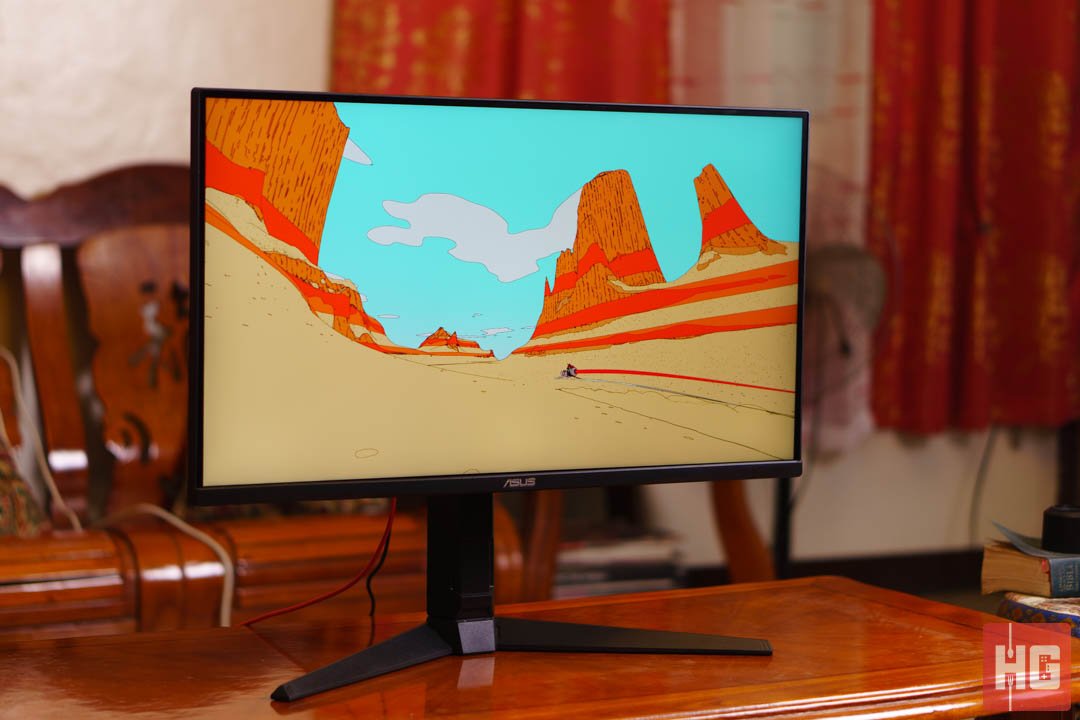
As mentioned, the ASUS TUF Gaming VG28UQL1A sports a 28-inch 3840 x 2160 IPS display with anti-glare coating, 90% DCI-P3 color space, and up to 300cd/m2 of brightness when HDR is turned off. The panel does support HDR10 and HDR400 with brightness reaching 400cd/m2.
The panel exceeds the 300cd/m2 mark when tested and comfortably settles at 325.42cd/m2. DCI-P3 is slightly lower than advertised at 83.40% but still exceeds 90% for sRGB. Contrast Ratio is rather low at only 1185:1 but that’s expected from an IPS panel. Contrast ratio can be increased by turning on ASCR.

Brightness uniformity is slightly off at the right-hand side with brightness around 7% lower on average compared to the middle column. Fortunately, the difference is small enough that it should affect user experience when used.
It’s worth noting that turning on ELMB or ELMB Sync will significantly reduce the brightness output of the display and disables HDR but motion blur will be considerably lessened.
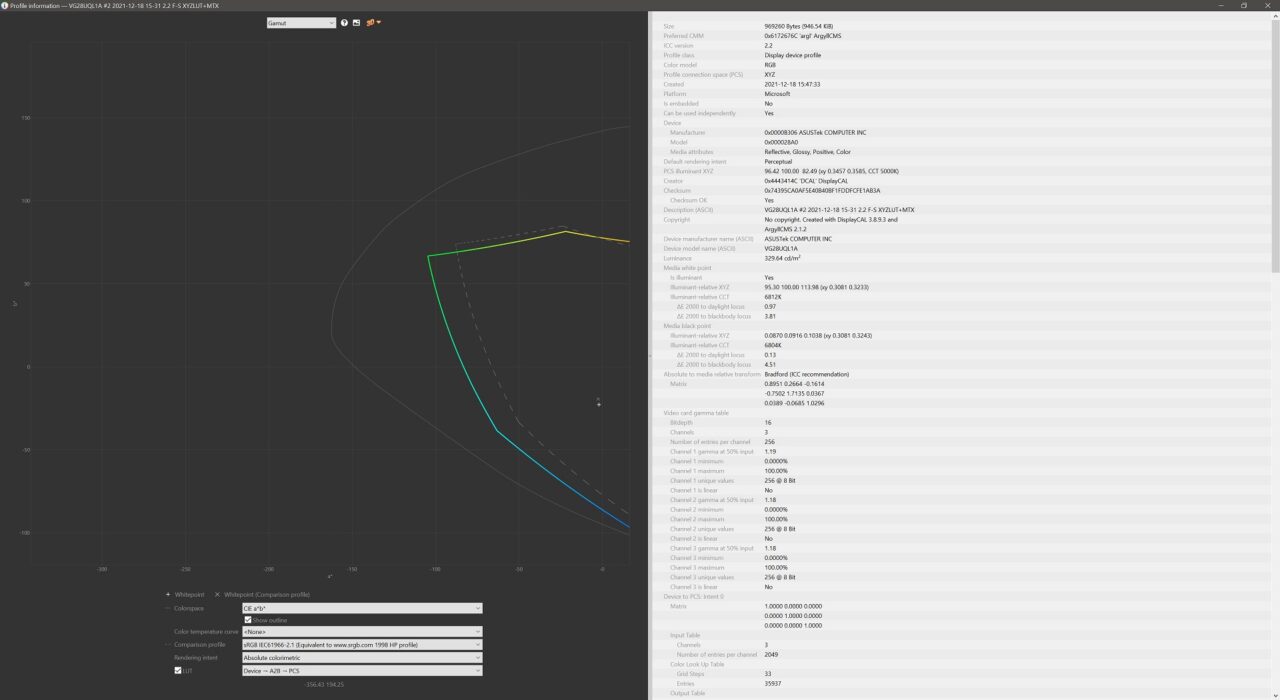
The TUF Gaming VG28UQL1A does need some adjustment to be somewhat color accurate. It has higher red and blues and lower greens on its default setting. Switching to sRGB Mode and User Mode on temperature yields the best results for the display. Values for color temperature are found below:
Colors after adjustment are fairly even though it won’t be able to match the accuracy and saturation of professional monitors. You can download its ICM calibration file here but do note that colors might be different from monitor to monitor.

IPS panels excel in viewing angles and that does not change with the ASUS TUF Gaming VG28UQL1A. Colors remain true to their reproduction regardless of viewing angle. Brightness does dip a bit at the middle when viewed at extreme angles from the sides.
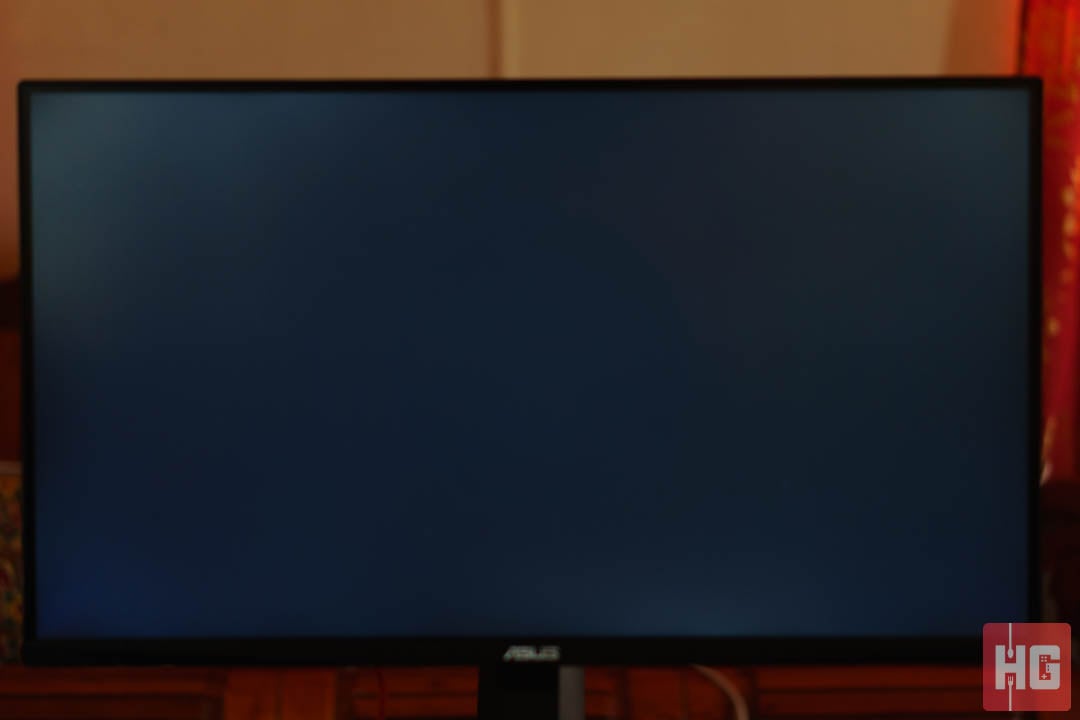
The monitor does have some minor backlight bleed at the bottom and at the top left corner, which is expected from an IPS panel. They are not noticeable on average use and will only appear on extremely black scenes with the brightness turned up. Like colors, backlight bleed will vary from monitor to monitor.
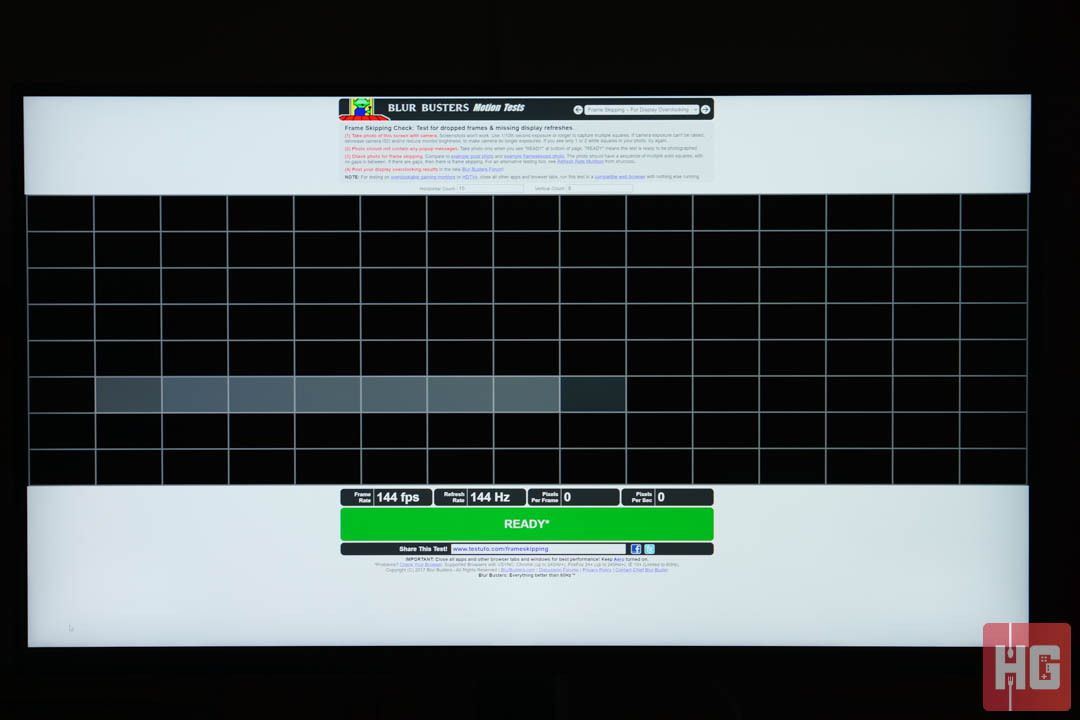
While not as fast as the 360Hz exotics in the market or the upcoming 480Hz in the near future, the TUF Gaming VG28UQL1A is still fast at 144Hz. There’s no Frame Skipping to be sensed on the display allowing for a smooth viewing experience. Skipping is sensed as dropped frames and might be perceived as “jerkiness” while playing at high framerates. This can be easily tested via BlurBuster’s Frame Skipping test.
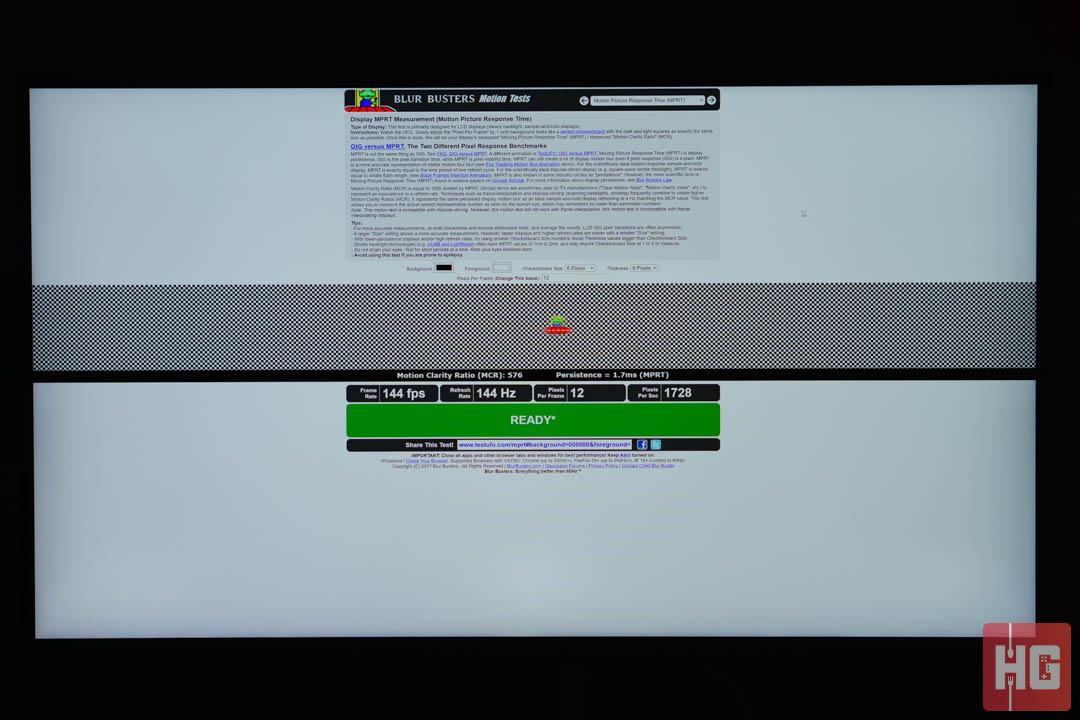
ASUS measures the grey-to-grey response time of the TUF Gaming VG28UQL1A at around 1ms. Testing its Motion Picture Response Time (MPRT) with Blur Buster’s test reveals a value of 1.7ms at its maximum Overdrive setting, which means that there’s barely any motion blur on the display.
The monitor only sips power even though it can display 4K 144Hz. Power usage peaks at only 46.57W at 100% brightness. It can also be comfortably left idle even when plugged in at consuming only 0.58W even though it would still be advisable to unplug electrical devices if unused.
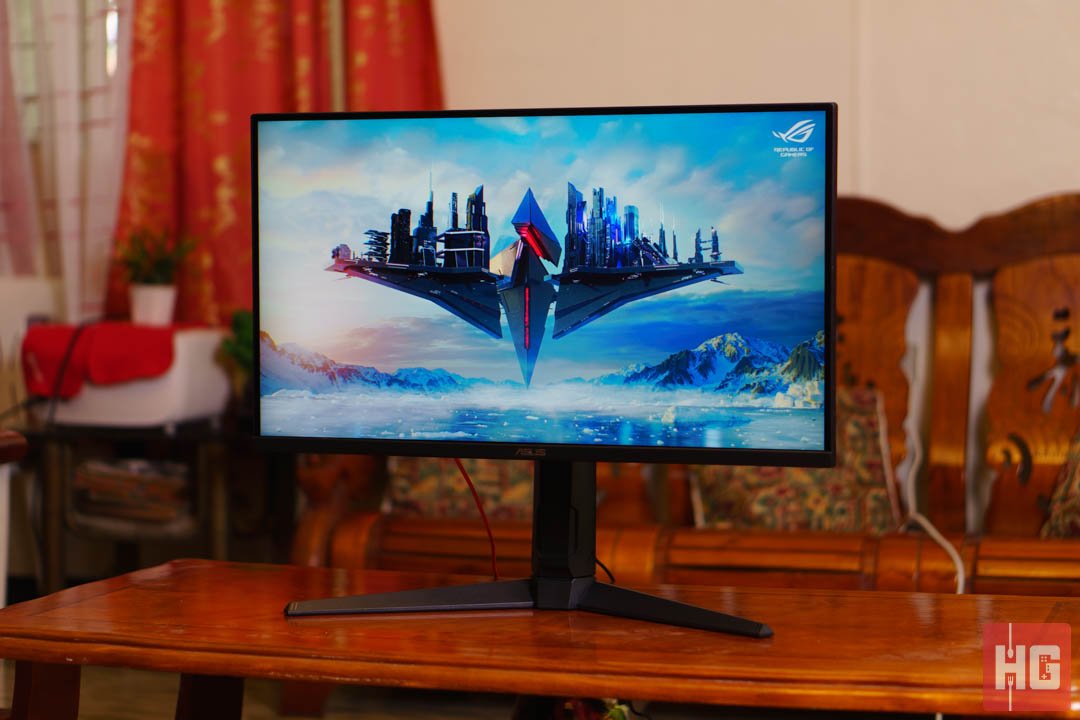
The ASUS TUF Gaming VG28UQL1A does not have extravagant features like Quantum Dot, DisplayHDR 1000, refined local dimming, or even RGB lighting of its ROG relatives but it does bring down the 4K 144Hz experience to a more palatable pricing at PhP 54,760.
It ticks all the boxes of a decent gaming monitor like fast refresh rate, okay color rendition, and high resolution but there is room for improvement. Panel uniformity and contrast could be improved while typical brightness should have bit a tad higher.

Its setbacks are made up by several quality of life enhancements like a stand complete with ergonomic adjustments, functional 4-way joystick at the back, tons of display connectivity, and a lot of display connections at the back.

Those who already have the hardware to push 4K 144Hz but do not want to shell out additional premiums for outlandish 4K displays will be served competently by the ASUS TUF Gaming VG28UQL1A. It’s not the perfect 4K 144Hz monitor but its an entry point to performance that enthusiasts aspire to reach.
The ASUS TUF Gaming VG28UQL1A is now available in the Philippines for PhP 54,760. It can be had through ASUS and ROG concept stores, Shopee and Lazada, as well as participating retailers nationwide.
Read our latest monitor reviews to help yourself have a more informed decision if you’re thinking of buying a new one.
